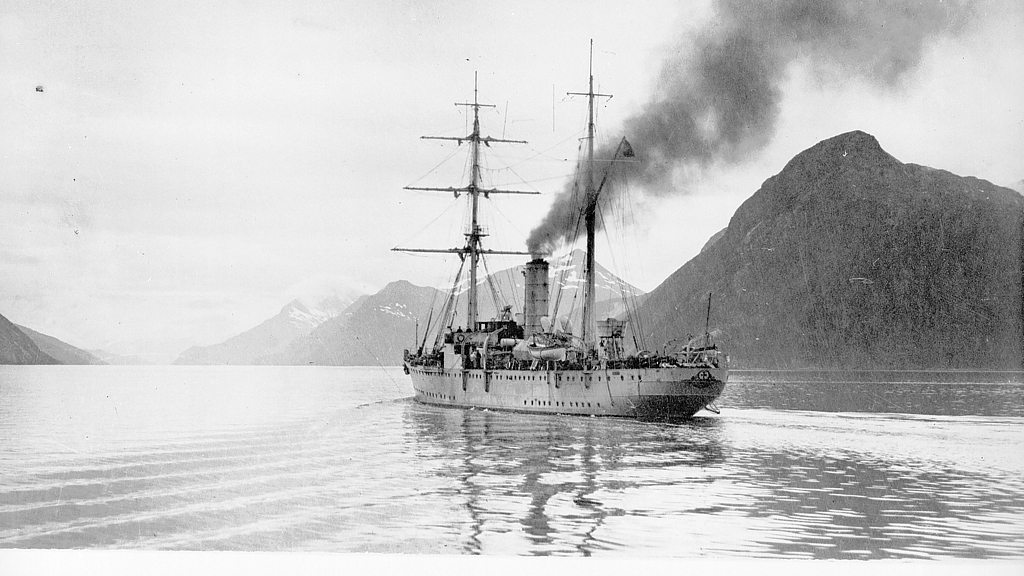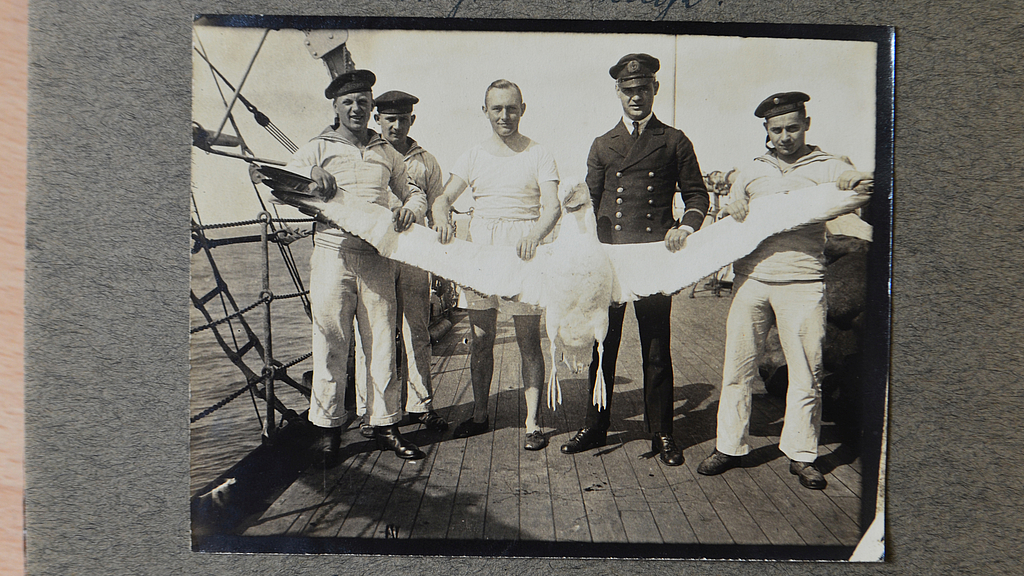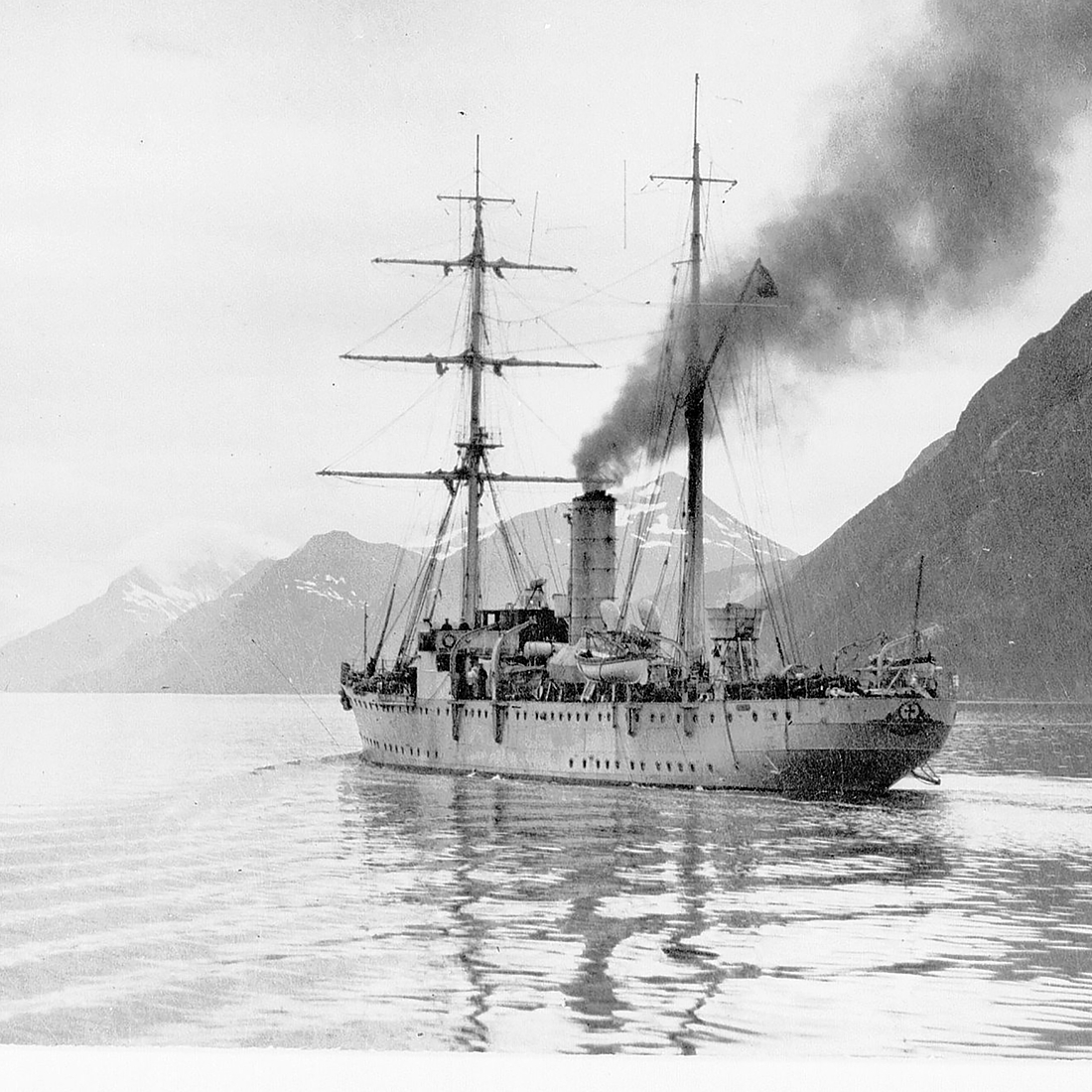Gaining Ground – The German Atlantic Expedition from 1925 to 1927
What does the seabed in the South Atlantic look like? Is there even gold in the seawater? What was the historical interplay between science and politics in the 1920s? The special exhibition “Land gewinnen - Die Deutsche Atlantische Expedition von 1925 bis 1927” gets to the bottom of the expedition and documents everyday life on board in an impressive wealth of images: animal mascots, the METEOR's most important woman, who had to stay ashore, and the stimulating effect of pineapple punch. The exhibition will be officially opened on June 25, 2025, Seafarers' Day, and will be open to the public from June 26.
A black ribbon runs through the gallery of the Bangert Building. It shows important moments from the METEOR I research expedition, which set sail in 1925 to systematically explore the South Atlantic - an expedition that made scientific history. Using innovative measuring methods, the team mapped the seabed, analyzed currents and even attempted to extract gold from the ocean. But the expedition was not just for scientific purposes: it was also a means of strengthening Germany's international presence after the First World War.
A century later, the special exhibition “Land gewinnen - Die Deutsche Atlantische Expedition von 1925 bis 1927” at the DSM commemorates the expedition and takes visitors on board so that they can experience everyday life on board under sometimes extreme conditions.
"The METEOR expedition was a milestone in marine research - and at the same time a reflection of its time. We are opening a window into the past of research and bringing it to life. The exhibition shows how research in the Weimar Republic was shaped between scientific ambition and political ambition," says Prof. Dr. Ruth Schilling, Managing Director of the German Maritime Museum.
The idea for the exhibition came about after the DSM received an extensive collection of photographs as a gift from the GEOMAR Helmholtz Center for Ocean Research Kiel. On the almost 1,600 negatives, various officers and scientists documented the work of the researchers, shore visits and everyday life on board in detail. This extensive photo collection is considered a pioneer of scientific communication.
The photographic treasure trove is supplemented by other archival documents that were already in the museum depot, such as the diary of Captain Fritz Spieß. All the objects and interactive stations make the exhibition an exciting journey through the Atlantic and the history of science.
"The German Atlantic Expedition is a central chapter in seagoing marine research. The German Maritime Museum is the ideal place to preserve the photo archive, make it accessible to the public and at the same time critically reflect on it. With our current expeditions, it is a matter of course to involve the region and local scientists," says Prof. Dr. Katja Matthes, Director of GEOMAR.
Guests can discover original measuring instruments and nautical charts and immerse themselves in the research work of the past using interactive media. Diary entries reveal how important the cultural program on board was in addition to science: a special band played folk songs, national anthems and jazz, and even animal mascots were baptized during the first equator crossing. As on today's expeditions, catering played a key role at sea. On-board celebrations were not only a lot of fun under the influence of pineapple punch and champagne. A belated tribute is paid to Lotte Müller, who was involved in the planning of the expedition. The oceanographer was not allowed to join the expedition in 1925 because it was not possible for women to travel on military ships at the time.
The political and colonial entanglements of the expedition are also addressed. The Namibian artist Kavena Hambira also takes a critical look at these. "We particularly enjoyed working on the exhibition, not only because of the wealth of exciting archive material, but also because of the collaboration with various experts. Video and audio interviews with nine GEOMAR researchers on the exhibition topics can be seen and heard. Maleike Schubert supported us with her everyday experience as a visually impaired person and the Namibian artist Kavena Hambira created both poetic and critically questioning video art on the colonial entanglements of the expedition," says curator Dr. Isabella Hodgson.
The exhibition will be on display at the DSM until 3 May 2026 and will be complemented by an extensive accompanying program. The dates will be published in the website calendar www.dsm.museum/kalender
The exhibition will be on display at the DSM until 3 May 2026 and will be complemented by an extensive accompanying program. The dates will be published in the website calendar www.dsm.museum/kalender
First items from the accompanying program:
- The theater ensemble Das Letzte Kleinod will perform the play “METEOR” on Friday, June 27, and Saturday, June 28, both at 7 p.m. and on Sunday, June 29, from 11 a.m. in the Scharoun Building. Tickets: in the DSM store 20 euros, reduced price 10 euros
- Evening tour of the exhibition: Thursday, July 24, 2025, from 5.45 pm
- This year, the Fotomarathon Bremen will be held at the DSM on September 6, 2025 from 11 am to coincide with the exhibition. Registration already possible via fotomarathonbremen.de/anmeldung/
- Long Night of the Deep Sea on 8.11.2025, 6 pm, with a silent film concert

Credit: DSM / Archiv

Credit: DSM / Archiv

Credit: DSM / Archiv

